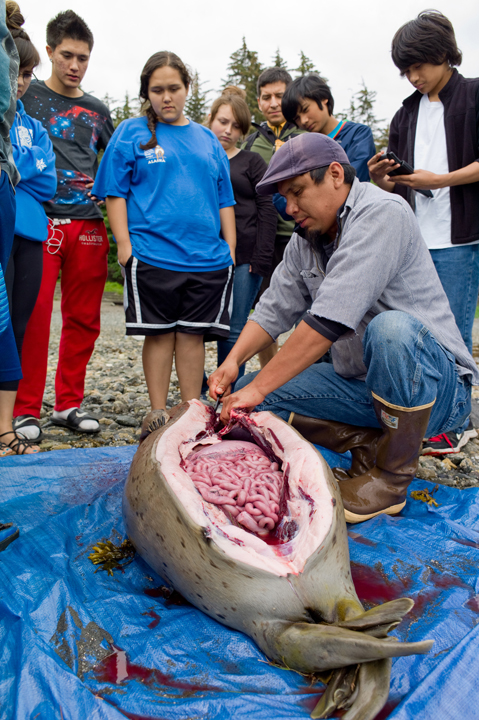JUNEAU — The Sealaska Heritage Institute has released a statewide study on the current definition of “Alaska Native” and how the rule could affect future generations of Natives who want to hunt marine mammals.
The definition under the Marine Mammal Protection Act (MMPA) allows only Natives with 1/4 blood quantum or more to hunt or use marine mammals for food or clothing and arts and crafts.
The study, conducted by Maritime Anthropologist Dr. Steve Langdon through Sealaska Heritage, does not make any recommendations but rather lays out several approaches the Native community may want to consider to protect their descendants’ hunting rights, said SHI President Dr. Rosita Worl, who presented the study, “Determination of Alaska Native Status under the Marine Mammal Protection Act,” to the Alaska Federation of Natives Board of Directors. AFN has not taken a position on changing the eligibility or maintaining the status quo.
The study also brings to light data that might alarm some sectors of the Native community, because findings indicate among other things that the proportion of the Alaska Native population becoming ineligible to hunt marine mammals under current agency enforcement policies is rising at an accelerating rate, Worl said.
“The result may be that in some communities especially around the Gulf of Alaska there may be few individuals eligible to hunt or utilize marine mammals in the not too distant future,” said Worl, who emphasized that any decision to maintain the status quo or to advance an alternative eligibility requirement will remain with the Native community.
In her presentation to the AFN board, Worl laid out the study and the possible approaches the Native community might consider if they elect to change the status quo.
The study was funded by Afognak Native Corporation, Native Village of Afognak, Chugach Alaska Corporation, Koniag Incorporated, NANA, North Slope Borough, Sealaska and Sealaska Heritage Institute.

